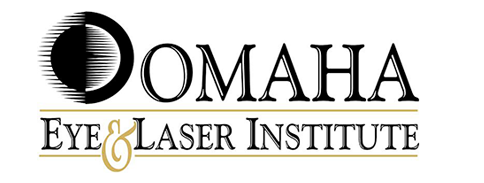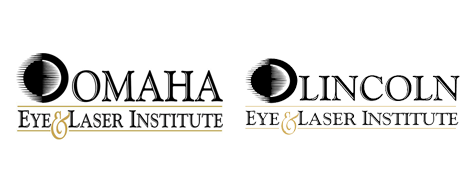Glaucoma is a leading cause of blindness in adults over 60. It’s often called the “silent thief of sight” because it usually has no early symptoms, so by the time you notice vision issues, the damage is already done
Though vision loss from glaucoma is irreversible, early detection and prompt treatment can prevent further damage. There are several forms of glaucoma, but the two main types are open-angle and angle-closure glaucoma.
By understanding the differences between the two, you can know what to look out for and whether you’re at a higher risk for developing one of these types of glaucoma. Keep reading to learn the difference between these two different kinds of glaucoma.
What is Glaucoma?

Glaucoma refers to a group of eye conditions that damage the optic nerve, which connects the eye to the brain. Damage to this nerve over time causes vision loss.
In most cases, glaucoma is caused by high eye pressure. Fluid normally flows in and out of the eye, maintaining healthy pressure.
When drainage is blocked, eye pressure, also called intraocular pressure (IOP), rises. This strains the optic nerve, leading to irreversible damage.
Eye pressure may rise gradually or suddenly, depending on the type of glaucoma. Regardless, early intervention is crucial to lower pressure and prevent further damage.
What Types of Glaucoma Are There?
The two primary types of glaucoma are open-angle glaucoma and angle-closure glaucoma. The word “angle” refers to the drainage channel between the iris and cornea.
Open-Angle Glaucoma
Open-angle glaucoma is the most common form of glaucoma. It occurs when the drainage angle remains open, but smaller trabecular meshwork channels become clogged.
This leads to a gradual rise in eye pressure. Early detection through eye exams can make treatment highly effective.
Angle-Closure Glaucoma
Angle-closure glaucoma is less common, accounting for less than 10% of all glaucoma cases. It happens when the iris bulges and blocks the primary drainage channel.
Chronic angle-closure glaucoma develops slowly, like open-angle glaucoma. However, acute angle-closure glaucoma is a medical emergency.
Acute angle-closure glaucoma occurs when the iris fully blocks the drainage angle, causing a rapid increase in eye pressure. Immediate treatment is needed to prevent optic nerve damage.
Acute angle-closure glaucoma has distinct symptoms, including:

- Headache
- Severe eye pain
- Blurred vision
- Eye inflammation
- Nausea
- Vomiting
If you experience these symptoms, seek emergency care immediately. Other rarer forms of glaucoma include normal-tension glaucoma, where eye pressure remains normal but the optic nerve still gets damaged.
Some forms can even affect infants and children, though these are extremely rare.
Who Is At Risk for Open-Angle Glaucoma?
Open-angle glaucoma often shows no early symptoms, making routine eye exams vital for early detection. You’re at higher risk for open-angle glaucoma if you:
- Are over 55
- Are of African descent
- Have a family history of glaucoma
- Are very nearsighted
- Have diabetes
If you’re at higher risk, make sure to schedule regular eye exams. Early detection can prevent significant vision loss.
Symptoms, when they appear, include blurry peripheral vision. As the condition progresses, you may experience tunnel vision and, in severe cases, total vision loss.
Who Is At Risk for Angle-Closure Glaucoma?
Angle-closure glaucoma is rarer, but certain risk factors increase the chances of developing it. You’re more likely to develop it if you:
- Are over 55
- Are of Asian descent
- Have a family history of angle-closure glaucoma
- Are very farsighted
- Are female
If you have multiple risk factors, discuss them with your doctor. Routine eye exams can help detect angle-closure glaucoma early.
Chronic angle-closure glaucoma shares similar symptoms with open-angle glaucoma. Both have no early symptoms, so early intervention is essential.
Be aware that if you have chronic angle-closure glaucoma already, you’re more likely to experience an acute attack. Knowing the symptoms can help you act quickly.
How is Open-Angle Glaucoma Treated?
While glaucoma can’t be cured, treatment can lower eye pressure and prevent further nerve damage. Common treatments for open-angle glaucoma include:
Medication

Prescription eye drops are often the first line of treatment for open-angle glaucoma. These drops lower eye pressure by reducing fluid production or improving fluid drainage.
Oral medications may also be used. Consistency is key to keeping your eye pressure down, so in most cases, you’ll need to take your glaucoma medication daily.
Laser Therapy
Laser treatments can help lower eye pressure by targeting the trabecular meshwork. The Omaha and Lincoln Eye and Laser Institute offers selective laser trabeculoplasty and micropulse transcleral laser cyclophotocoagulation (CPC) to help reduce intraocular pressure in patients with glaucoma.
For severe cases of glaucoma, however, surgery may be required in addition to or instead of laser therapy.
Surgery
Surgical options, like a trabeculectomy, create new drainage channels to lower eye pressure. Other procedures may involve inserting shunts, stents, or tubes to improve fluid drainage.
Omaha Eye offers minimally invasive glaucoma surgeries (MIGS) like the iStent and Xen Gel Stent to help reduce intraocular pressure with a quick and easy procedure.
How is Angle-Closure Glaucoma Treated?
Chronic angle-closure glaucoma can be treated similarly to open-angle glaucoma with medications and drainage-enhancing procedures. However, there are two other kinds of procedures typically only used to treat angle-closure glaucoma:
Iridoplasty
Iridoplasty uses a laser to shrink the iris, relieving pressure by opening the drainage channel. This treatment may not be fully effective if the iris has bulged significantly.
Iridotomy
This procedure creates a small hole in the iris. Often used in emergencies, like during an acute angle-closure attack, it can quickly relieve pressure, even if the iris has completely blocked the drainage channel.
Treatment plans vary based on the type and severity of your specific case of glaucoma. After diagnosis, your ophthalmologist will work with you to create a customized plan that may involve multiple treatments.
Do you want to learn more about glaucoma and how to prevent vision loss from this common condition? Schedule an appointment at The Omaha and Lincoln Eye and Laser Institute in Omaha and Lincoln, NE!





